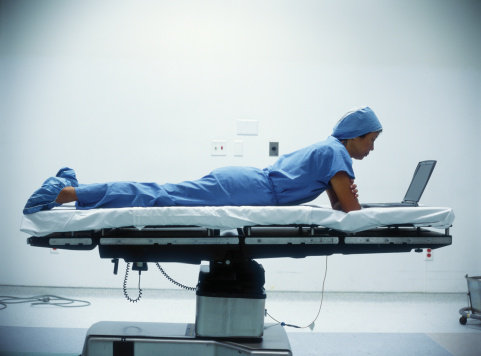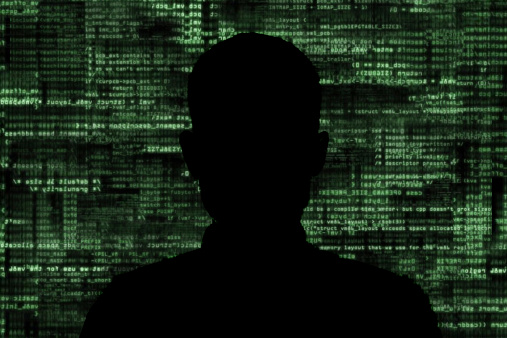Hollywood Hospital Hits the Recovery Room After Ransomware Attack
The Hollywood Presbyterian Medical Center had been hacked by ransomware on February 5th 2016. The attacker seized control of the hospital’s computer...

Technology is transforming virtually every industry, and healthcare is no exception. Digital applications are becoming more readily available for patients and providers alike. Analytics and similar tools are allowing doctors to provide more accurate diagnoses and targeted treatments, while researchers can better predict health trends. Here are some of the most notable ways technology is changing the face of healthcare in 2019:
Portals and other digital tools enable patients to better understand diagnoses and treatments, empowering them to take an active role in their care. Since information can be made available in real-time, patients can easily stay up-to-date on their health status and make informed decisions when seeking medical services. Consumers have long been using the Internet to obtain medical information– researching symptoms, treatments, and their own health conditions– and that trend is only expected to accelerate.
While we’re on the topic of patient empowerment, it’s worth noting that, in addition to portals, patients can take control of their health with a variety of portable products, such as cardiac monitoring devices. (Remote monitoring is especially helpful for those with pacemakers). These items either provide patients with useful data about their health or allow them to take proactive steps to promote wellness. These are just a few of the products that are rapidly taking over the market:
You can probably think of other items to add to the list. As technology continues to evolve, the coming years will likely see the introduction of many new-and-improved products to help consumers optimize their health.
Of course, smartphones play a critical role in empowering patients, too. From tracking heart rates to measuring sleep quality, there’s an app for that.
By making it easier for patients to keep tabs on their health, these devices can reduce the likelihood of hospitalizations and the frequency of doctor visits, minimizing costs and stress. With remote monitoring, clinicians can detect health problems early and intervene before they become more serious or other complications arise.
Multiple modes of communication, such as email, text, and chat, allow practitioners and patients to connect when it’s convenient. Patient portals and similar platforms permit them to share information without violating HIPAA regulations. As long as providers follow proper security protocols, they can ensure that sensitive data is protected from would-be hackers. Furthermore, automated systems help patients stay on top of their health by sending them reminders about follow-up visits or procedures.
Healthcare facilities– especially hospitals– are reaching wider audiences than ever before through another well-known platform: social media. Healthcare providers are capitalizing on the power of these sites to answer health-related questions, advertise their services, and educate the community about potential health risks. While this practice began on college campuses, it has quickly gained momentum among the general population. Even senior citizens are using Facebook to chat with doctors and nurses and read articles about new diagnostic procedures and treatments.
Digital channels are also improving doctors’ ability to collaborate with colleagues across the globe. This practice– telemedicine– is proving especially indispensable to isolated or underserved communities; doctors can consult with medical experts from around the world without traveling long distances or playing phone tag. They’re not limited to relying only on the resources within their immediate area.
Digital tools are improving the accuracy of diagnoses, eliminating the need for procedures that do not always yield consistent results. Technology has improved nearly every aspect of direct care-delivery: testing, physical exams, health evaluations, and more. Practitioners regularly use tablets to take patient histories and send prescriptions to the pharmacy. Big data is revolutionizing how health information is managed. Electronic databases make it easier to display and retrieve data, streamline workflows, and arrive at diagnoses in a timely manner.
Most of us associate artificial intelligence (AI) with images of house-cleaning robots or apps that let us use our smartphones to set the thermostat or turn on the lights. AI is improving the efficiency of health services too, performing routine tasks such as transporting supplies or sending out alerts when patients are in distress.
Epidemics such as the Ebola outbreak that swept through Africa a few years ago are more difficult to contain when communication is stymied by weak digital infrastructure. It’s worth noting that incidents of death and illness were highest in countries that lacked reliable Internet access, making it more difficult for governments to warn citizens and establish protocols for containing the contagion. Researchers are capitalizing on the use of databases to predict outbreaks and take appropriate preventative measures.
Additionally, new technologies are improving research techniques and data-integrity, providing valuable insight toward developing new treatments and other interventions to minimize the toll of diseases on vulnerable populations. For instance, the aforementioned epidemic created an impetus for scientists to expedite their research endeavors to identify other animal-borne pathogens– and take steps to combat them before they pose a significant threat to humans.
Technology is revolutionizing the healthcare experience for practitioners and patients alike. While some practices have been slow to adopt new innovations, the benefits of going digital outweigh any disadvantages, leading even skeptics to begin buying in. New advancements in medical technology will prove invaluable as large segments of the US population reach their golden years, increasing the need for clinical services. The frenetic pace at which the digital world is evolving will have far-reaching implications for healthcare not only in 2019, but for years to come.


The Hollywood Presbyterian Medical Center had been hacked by ransomware on February 5th 2016. The attacker seized control of the hospital’s computer...

So far, there are no evidences that point to the stolen information being used inappropriately. Nevertheless, the state is providing identity...

Self-destructing communication apps are currently on the rise, and it’s no wonder – living in a technologically advanced generation we are always...

On Time Tech is an IT Support and Computer Services company serving California. We provide services to the areas in and around We know businesses like yours need technology support in order to run highly-effective organizations. Leverage pro-growth technology services for your company now.
© 2025 On Time Tech